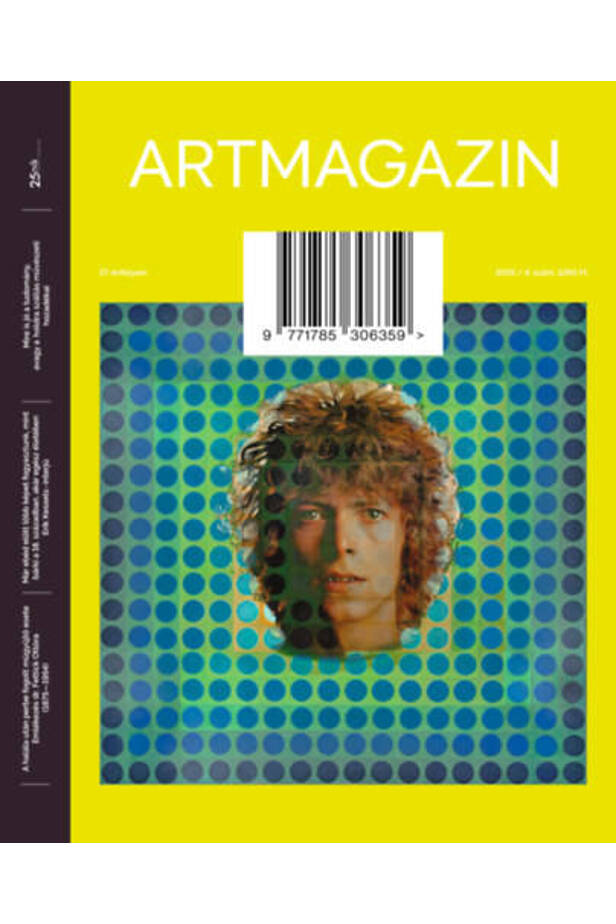Artmagazin 115. - 2019/4.
Delivery time: 2 - 3 business days
Quantity:
HUF 1,190
Description
Artmagazin's articles are published in the field of contemporary and classical art, focusing on Hungarian and international events, research, trends and trends. Our interest extends to border areas: fashion and design are as much a topic here as the connection points between theater, architecture and music. ARTMAGAZIN 115. The hero of Space Oddity is an astronaut who, seeing the Earth as a blue ball from above, no longer wants to return, but rather remains in a state of eternal hovering. Vasarely's perforated space adds a transition effect to this - let's not forget that we are still in front of digital technology, we had to create the illusion by hand, it was not yet possible to entrust complete work phases to machines - this chapter of imaging starts right here. You could say the space program was in the air, but it's still special that Bowie and Vasarely were connected. And from this point of view, it is also special, ie it is rather incomprehensible that the Vasarely Museum in Budapest does not have a long line of tourists and the whole city is not full of Vasarely posters. In any case, our first article is about the exhibition of accommodation on the moon, and then immediately afterwards we recommend an exhibition in Dunaújváros, choosing a phenomenon twenty years later, the theme of the total solar eclipse in 1999, and also presenting the photos taken at that time. Then comes an interview with an artist from the Netherlands, Erik Kessels, who makes his own works from photographs he finds, and then we visit Salgótarján, where the Hungarian architecture of the space age can still be studied in great density, as well as one or two realized elements of the utopia. sounded: the border of the starry sky. As the image of the one who shouted this slowly fades, the metaphysical poetry of the sentence may become more and more apparent, and we may discover more and more beauty not only in modernist but also in socialist architecture. We also write about two oeuvres related to the period: János Balázs, the gypsy painter from Salgótarján, who, as a medium, quickly poured into the world the saying that disappeared together with the small adobe houses in Pécskőd, and Lajos Barta, whose mapping of schizophrenia of the time. And as the most memorable role of Imre Sinkovits over time became that his voice as a Dwarf, it turns out that Lajos Barta actually knows everyone, as he made the stone pigeons in the playground on Gellert Hill that look more like dinosaurs. The heroine of our great life interview is Orsolya Drozdik, her childhood and youth are also taking place during these years, only with her can we follow how to make the female aspect dominant not only in her own artistic practice, but also in her memory. Our next topic is a Christian Dior exhibition; the article about him is an interesting historical addition to why feminists protested against Dior. We also get interesting additions about the disturbances of the fifties, at the beginning of the construction of the dictatorial system, in connection with the memory of an important collector. Dr. Otto Fettick, one of the largest donors to the Museum of Applied Arts, was prosecuted after his death, and the state itself confiscated values in a story with many lessons learned.
| publisher | Artmagazin Kft. |
|---|---|
| scope | 80 |
| volume unit | oldal |
| ISBN | 9771785306359 |
| year of publication | 2019 |
| binding | glued |


